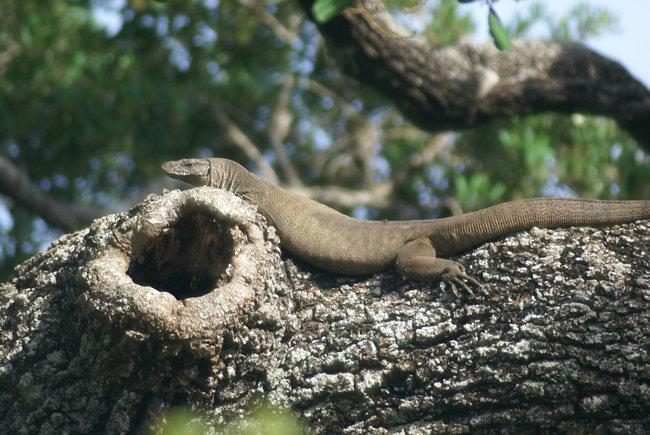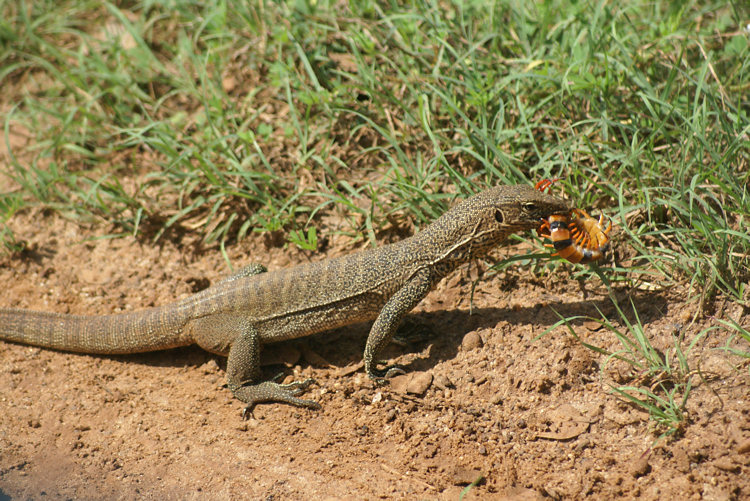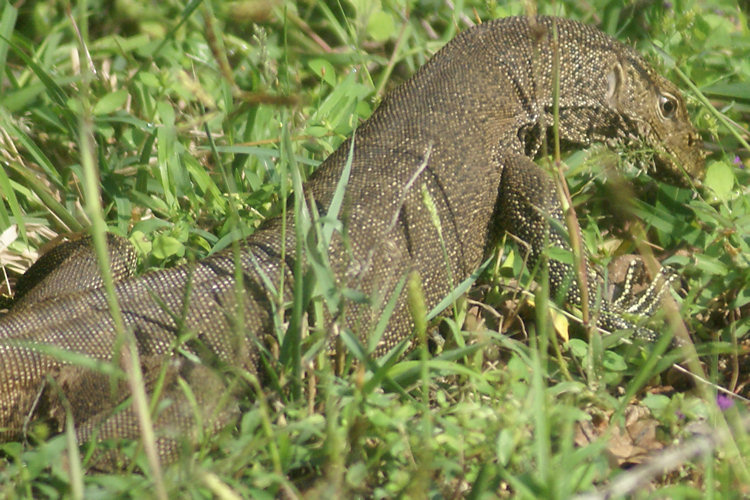Sri Lankan Land Monitor lizards
We were lucky to see a number of Sri Lankan Land Monitor lizards in Yala National Park. Most were spotted on the ground hunting for their dinner. For safety they bask in the sunshine up in trees.

Yala National Park Sri Lankan Land Monitor lizard sunbathing up a tree
You have to have good eyes to spot them as they just seem to blend into the natural shape of the tree branches. There are two types of monitor lizards in Sri Lanka, the more common Land Monitor Lizard (Varanus bengalensis) and the Water Monitor Lizard (Varanus salvator).
The common land Monitor is normally found in hot lowland country of Sri Lanka. It is seldom seen in parts of the country over 500m above sea level as it gets too cold for them. They have adapted to surviving in lots of different habitats ranging for jungle rain forests to desert scrub.
The local farmers encourage them to wander around their fields as they eat vermin. These lizards munch on small invertebrates, as you can see in my middle photograph, mice, ants, fruit, frogs, spiders, scorpions, beetles, grubs and if they can catch them, bats. They can weigh over 10kg and reach just under 5ft. They are among the largest lizards in the world.

Yala National Park Sri Lankan Land Monitor lizard eating a very big caterpillar
At night they keep warm by hiding in holes, burrows and protective ledges. They start their day sunbathing to get their body temperature up. You will not normally see them very active in the morning. These are one of the animals you will find actively hunting during the hot midday sun. Their long nails on the end of their digits enables them to climb up tree trunks vertically.
The female can lay over 30 eggs which she puts in a hollow depression she has dug out and then covers them with soil. Some have been known to use holes in fallen trees or a rotting tree stump as a resting place for their eggs. Incubation periods vary depending on daily temperatures. Try to spot its tongue. It is a purple colour and is forked. They have odour particle detector sensors at the end of each tip that helps them detect their next meal.
The tongue brings these particles back into its mouth where another sensory organ called the Jacobson organ can gauge the the different strengths on each forked tongue tip and can then work out which direction to go. In Sri Lanka the Land Monitor Lizard is listed as 'commercially threatened' as they are considered 'bush meat' They are hunted to provide meat that is sold to locals.

Yala National Park Sri Lankan Land Monitor lizard hunting in the grass
Travel books

